Zhangjiajie National Forest Park
- January 4, 2024
- 0 comment
Located in the northwestern expanse of Hunan Province, China, Zhangjiajie National Forest Park stands as a testament to nature’s artistry and grandeur. Established in 1982, this pristine sanctuary, enveloped within the UNESCO-listed Wulingyuan Scenic Area, captures the imagination with its breathtaking landscapes and distinctive quartz-sandstone pillar formations. Spread across 4,810 hectares, the park is a harmonious blend of dense forests, deep ravines, and iconic rock structures that have been shaped over the years by the relentless forces of physical erosion.
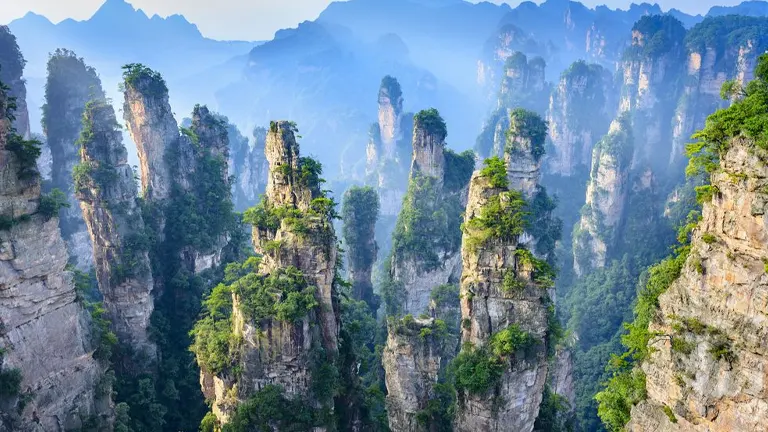
As a pioneer among China’s national forest parks, Zhangjiajie beckons adventurers into a realm where cloud-kissing mountains, crystal-clear streams, and lush foliage seamlessly blend, offering an enchanting escape into the heart of Mother Nature’s masterpieces. A highlight is the renowned Southern Sky Column, affectionately renamed “Avatar Hallelujah Mountain,” echoing the cinematic inspiration drawn from this ethereal landscape. From the world’s tallest outdoor lift, the Bailong Elevator, to the record-setting Zhangjiajie Grand Canyon Glass Bridge, this park promises not only awe-inspiring natural wonders but also unforgettable feats of human engineering. Zhangjiajie National Forest Park is a testament to the harmonious dance between the earthly elements, making it a destination that captivates both the adventurous and the nature enthusiast alike.
Characterizing Features of the Zhangjiajie National Forest Park
- Quartz-Sandstone Pillars: The most striking feature of Zhangjiajie National Forest Park is its unique pillar-like rock formations, predominantly made of quartz-sandstone. These towering structures, carved by physical erosion over countless years, showcase a distinct contrast to the typical limestone-eroded pillars found in other regions.
- Avatar Hallelujah Mountain (Southern Sky Column): The Southern Sky Column, standing at an impressive 1,080 meters, is a standout pillar within the park. Formerly known as such, it gained global recognition as “Avatar Hallelujah Mountain” after the renowned movie Avatar drew inspiration from these majestic peaks. The renaming in 2010 solidified its place as a cultural and cinematic landmark.
- Bailong Elevator: Dominating the skyline, the Bailong Elevator, or “hundred dragons sky lift,” is a marvel in engineering. As the world’s tallest outdoor lift, reaching a height of 326 meters, it offers visitors a breathtaking ascent to the park’s summit in less than two minutes. The three glass elevators, each accommodating 50 people, provide an unparalleled perspective of the surrounding landscapes.
- Zhangjiajie Grand Canyon Glass Bridge: A testament to daring architecture, the Zhangjiajie Grand Canyon Glass Bridge holds the titles of the world’s longest (430 meters) and highest (300 meters) pedestrian glass bridge. Opened in 2016, this transparent marvel spans the Grand Canyon, providing courageous visitors with panoramic views of the stunning landscapes below.
- Diverse Trail Network: The park boasts a network of hiking trails, each offering a unique adventure through its diverse terrains. From the challenging Zhangjiajie Scenic Area Trail, with an elevation change of 3,812 feet, to the moderate Golden Whip Trail leading to Avatar Mountain, these pathways cater to varying levels of physical fitness and reward hikers with unparalleled vistas.
- UNESCO World Heritage Status: Zhangjiajie National Forest Park is an integral part of the larger Wulingyuan Scenic Area, which was designated as a UNESCO World Heritage Site in 1992. This recognition underscores the park’s global significance, acknowledging its outstanding natural beauty, unique geological features, and cultural importance.
- Abundant Flora and Weathered Landscapes: Enveloped in a year-round moist climate, the park’s dense foliage and weathered landscapes contribute to its ethereal charm. The physical erosion processes, coupled with the impact of expanding ice in winter, have shaped the unique features of Zhangjiajie, creating an environment that is both awe-inspiring and ecologically diverse.
Zhangjiajie National Forest Park stands as a testament to the harmonious interplay between nature’s forces and human exploration, inviting visitors to discover a landscape that seamlessly blends geological wonders with cinematic allure.
History
Established in 1982, Zhangjiajie National Forest Park, located in the northwestern part of Hunan Province, China, carries a rich history woven into the fabric of its breathtaking landscapes. Originally recognized as China’s inaugural national forest park, covering an area of 4,810 hectares, Zhangjiajie quickly garnered attention for its distinctive quartz-sandstone pillars and lush greenery. In 1992, the park became an integral component of the larger Wulingyuan Scenic Area, earning the esteemed title of a UNESCO World Heritage Site. A decade later, in 2001, it was designated as the Zhangjiajie Sandstone Peak Forest National Geopark, expanding its reach to 3,600 square kilometers. The global significance of the park was further underscored in 2004 when it earned the prestigious status of a UNESCO Global Geopark.
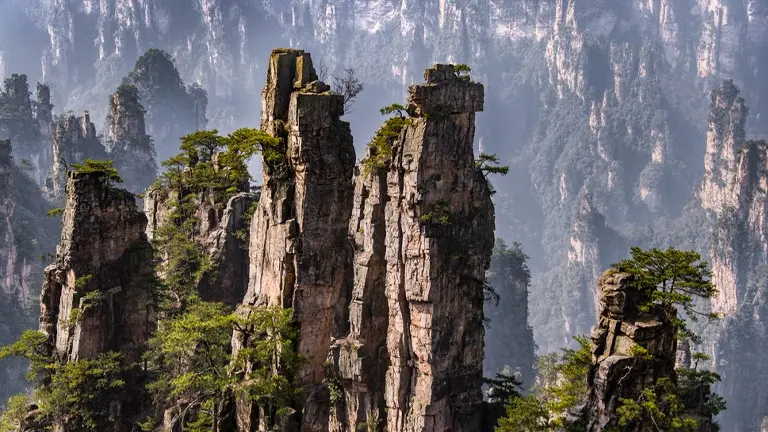
Zhangjiajie’s fame soared internationally in 2010 when one of its prominent pillars, the Southern Sky Column, was renamed “Avatar Hallelujah Mountain” in homage to James Cameron’s blockbuster film, Avatar, which drew inspiration from the park’s ethereal landscapes. The park’s structural marvels include the world’s tallest outdoor lift, the Bailong Elevator, which began operating in 2002, swiftly transporting visitors to panoramic heights in a matter of minutes. In 2016, the Zhangjiajie Grand Canyon Glass Bridge, the world’s longest and highest pedestrian glass bridge, opened, adding a thrilling dimension to the park’s allure.
Over the years, Zhangjiajie National Forest Park has not only solidified its status as a natural wonder but has also become a symbol of China’s commitment to preserving and showcasing its unique geological and ecological treasures. The intertwining history of Zhangjiajie and human exploration continues to unfold, inviting travelers from around the globe to immerse themselves in the timeless beauty of this enchanting national treasure.
Importance in Conservation and Recreation of Zhangjiajie National Forest Park
Zhangjiajie National Forest Park holds a dual significance, serving as a haven for conservation efforts and a captivating destination for recreational exploration. As a testament to the Earth’s geological evolution, the park’s quartz-sandstone pillars and unique formations stand as living exhibits, contributing to our understanding of natural processes and the intricate interplay between climate and topography. The park’s dense forests and diverse ecosystems harbor a rich array of plant and animal species, emphasizing its role as a vital conservation area within the larger Wulingyuan Scenic Area, recognized as a UNESCO World Heritage Site.
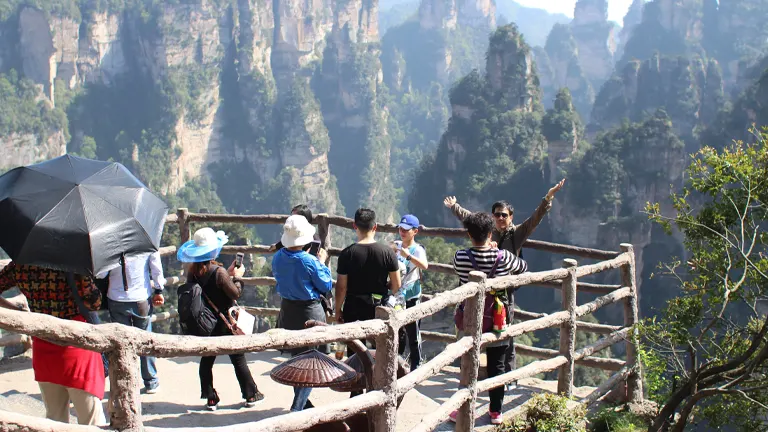
Beyond its ecological importance, Zhangjiajie is a playground for visitors seeking awe-inspiring experiences. The carefully curated trail network, featuring routes like the challenging Zhangjiajie Scenic Area Trail and the moderate Golden Whip Trail, allows enthusiasts to immerse themselves in the park’s splendor. The record-holding structures, including the Bailong Elevator and Zhangjiajie Grand Canyon Glass Bridge, add an element of adventure, attracting tourists from across the globe. Balancing conservation and recreation, Zhangjiajie National Forest Park stands as a shining example of how preserving natural wonders can harmoniously coexist with providing enriching experiences for those who seek to connect with the beauty of our planet.
Unique Location of Zhangjiajie National Forest Park
Perched in the northwestern expanse of Hunan Province, China, Zhangjiajie National Forest Park occupies a truly extraordinary location that distinguishes it as a natural wonder. Situated within the larger Wulingyuan Scenic Area, the park unfolds its enchanting landscapes amid the lush embrace of central China. What sets this destination apart are the iconic quartz-sandstone pillars, soaring like ancient sentinels, shaped by physical erosion in a way that is unparalleled globally. Surrounded by a year-round moist climate, the park’s dense foliage, deep ravines, and pillar-like rock formations create an ethereal panorama that has long inspired artists and storytellers.

The park’s geographic uniqueness lies not only in its distinctive topography but also in the fact that it served as a muse for the fictional landscapes depicted in James Cameron’s blockbuster film, Avatar. This blend of geological wonders, cultural significance, and cinematic allure positions Zhangjiajie National Forest Park as a truly one-of-a-kind destination, inviting explorers to marvel at the extraordinary beauty woven into its unique location.
Diverse Vegetation and Plant Species in Zhangjiajie National Forest Park
- Oak Trees (Quercus Varieties): The park hosts a variety of oak species, such as Quercus serrata and Quercus acutissima. These deciduous trees enrich the canopy, displaying a splendid array of autumnal hues and providing habitats for diverse wildlife.
- Ring-cupped Oak (Cyclobalanopsis Glauca): Flourishing in the subtropical broadleaf forests, the Ring-cupped Oak, scientifically known as Cyclobalanopsis glauca, distinguishes itself with its unique cup-shaped acorns. This species plays a vital role in the park’s ecosystem, supporting a diverse array of insects and birds.
- Chinese Cedar (Cryptomeria Fortunei): Gracefully dominating the landscapes of Zhangjiajie, the Chinese Cedar, or Cryptomeria fortunei, contributes to the park’s year-round greenery with its evergreen needles. Against the quartz-sandstone pillars, these trees create picturesque scenes.
- Bamboos (Bambusa Varieties): Diverse bamboo species, including Bambusa vulgaris and Bambusa multiplex, form bamboo groves within the park. These rapidly growing plants enhance overall biodiversity and provide essential habitats for birds and insects.
- Golden Pothos (Epipremnum Aureum): Commonly known as Golden Pothos, or Epipremnum aureum, this epiphytic plant gracefully clings to trees and rocks throughout the park, adding an elegant touch to the forest understory with its heart-shaped leaves.
- Dendrobium Orchids: Flourishing in the park’s subtropical climate, Dendrobium orchids, represented by species like Dendrobium chrysotoxum, contribute vibrant blooms that enhance the park’s aesthetic appeal and attract pollinators.
- Cast Iron Plant (Aspidistra Elatior): The Aspidistra elatior, known as the Cast Iron Plant, thrives in the shaded areas of the park. Recognized for its resilience and adaptability to low-light conditions, it enriches the diversity of the forest floor vegetation.
- Spikemoss (Selaginella Tamariscina): Spikemoss, a fern-like plant, covers rocks and tree trunks throughout the park. Selaginella tamariscina’s lush greenery adds a delicate and intricate aspect to the forest landscape.
- Hardy Rubber Tree (Eucommia Ulmoides): The Hardy Rubber Tree, or Eucommia ulmoides, holds cultural significance in Zhangjiajie and is valued for its use in traditional Chinese medicine.
- Clubmoss (Lycopodium Species): Various species of clubmoss, including Lycopodium clavatum, contribute to the mossy undergrowth of the park, enhancing its enchanting atmosphere, especially during periods of high humidity.
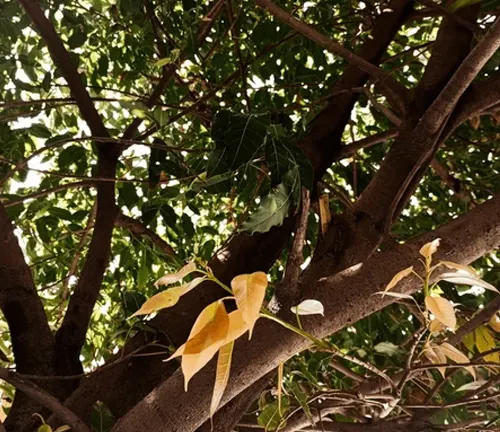
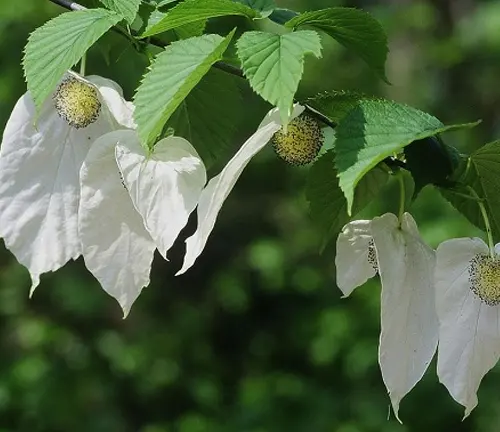
Fauna
- Golden Snub-nosed Monkey (Rhinopithecus roxellana): The charismatic Golden Snub-nosed Monkey, known scientifically as Rhinopithecus roxellana, is a highlight of Zhangjiajie National Forest Park. Endemic to central and southwestern China, these primates are easily recognizable by their distinctive golden fur and upturned noses. Observing them in their natural habitat adds an extra layer of enchantment to the park experience.
- Clouded Leopard (Neofelis nebulosa): Stealthy and elusive, the Clouded Leopard (Neofelis nebulosa) roams the dense forests of Zhangjiajie. This carnivorous feline, with its striking cloud-like patterns on its fur, contributes to the park’s ecological balance as a top predator. While sightings are rare due to their elusive nature, the presence of these magnificent cats underscores the park’s biodiversity.
- Tufted Deer (Elaphodus cephalophus): The enchanting Tufted Deer, scientifically known as Elaphodus cephalophus, graces the woodlands of Zhangjiajie. Recognized by its distinctive tuft of hair on its forehead and small, elegant antlers, this herbivorous species adds a touch of grace to the park’s diverse fauna. Their presence underscores the delicate balance between herbivores and predators within the ecosystem.
- Chinese Giant Salamander (Andrias davidianus): The aquatic realms of Zhangjiajie National Forest Park are inhabited by the Chinese Giant Salamander (Andrias davidianus). As one of the world’s largest amphibians and a critically endangered species, this ancient creature plays a crucial role in the park’s freshwater ecosystems. The conservation of these salamanders reflects the park’s commitment to preserving its unique biodiversity.
- Fairy Pitta (Pitta nympha): The vibrant and melodious Fairy Pitta (Pitta nympha) graces the park’s woodlands during the breeding season. With its striking plumage of vivid colors, this migratory bird adds a delightful touch to the avian diversity of Zhangjiajie. Birdwatchers are treated to the mesmerizing sights and sounds of these feathered inhabitants.
- Giant Panda (Ailuropoda melanoleuca): While not native to Zhangjiajie, efforts in conservation and ecological restoration have led to occasional sightings of the iconic Giant Panda (Ailuropoda melanoleuca) in the surrounding areas. These beloved, bamboo-munching bears symbolize the broader conservation goals of the park, emphasizing the interconnectedness of ecosystems.
- Asian Black Bear (Ursus thibetanus): The elusive Asian Black Bear (Ursus thibetanus) is another resident of Zhangjiajie, navigating the dense forests with its distinctive black fur and white V-shaped chest mark. As an omnivorous species, their presence underscores the park’s ecological health, contributing to the intricate web of interactions among flora and fauna.
- Chinese Serow (Capricornis milneedwardsii): The rugged terrain of Zhangjiajie is home to the Chinese Serow (Capricornis milneedwardsii), a goat-like ungulate with distinctive backward-curving horns. Adapted to the steep cliffs and rocky outcrops, these herbivores contribute to the unique biodiversity of the park, showcasing nature’s adaptability to challenging landscapes.
- Rhesus Macaque (Macaca mulatta): The mischievous Rhesus Macaque (Macaca mulatta) is a common sight in Zhangjiajie National Forest Park. Agile and social, these primates navigate the forest with ease, adding a playful element to the park’s wildlife. Their adaptability to various habitats reflects the diverse ecosystems present in the park.
- Crested Kingfisher (Megaceryle lugubris): The pristine waterways of Zhangjiajie are graced by the presence of the Crested Kingfisher (Megaceryle lugubris), a stunning avian species with a distinctive crest and vibrant plumage. Their presence highlights the importance of preserving aquatic ecosystems within the park, providing a haven for a variety of bird species.
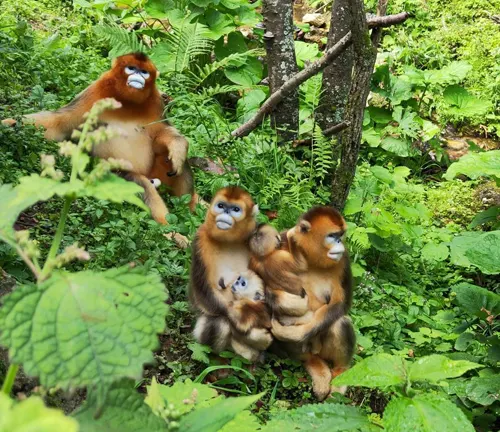
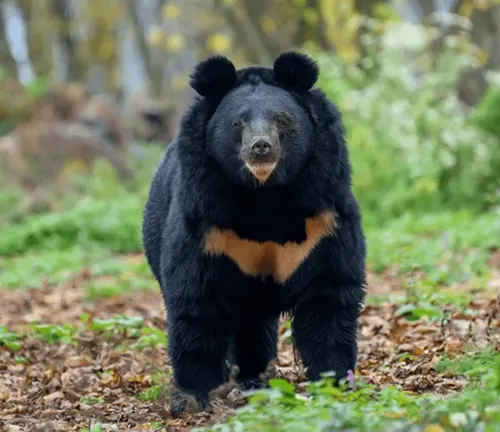
Attractions in Zhangjiajie National Forest Park
1. Avatar Hallelujah Mountain (Southern Sky Column)

Towering at a height of 1,080 meters, the Avatar Hallelujah Mountain, formerly known as the Southern Sky Column, is an iconic pillar-like formation in Zhangjiajie National Forest Park. Renamed in honor of the movie “Avatar,” the quartz-sandstone pillar stands as a testament to the park’s ethereal landscapes and served as inspiration for the floating rocks in the film. The panoramic views from its summit provide an awe-inspiring experience, making it a must-visit attraction for nature enthusiasts and movie fans alike.
2. Bailong Elevator (Hundred Dragons Sky Lift)

The Bailong Elevator, colloquially known as the “Hundred Dragons Sky Lift,” is a remarkable feat of engineering and the world’s tallest outdoor lift, soaring to a height of 326 meters. Opened to the public in 2002, this glass elevator transports visitors from the foot to the top of a sandstone peak in less than two minutes, offering breathtaking views of the surrounding forested landscapes. The Bailong Elevator provides a unique and exhilarating way to access elevated viewpoints within the park.
3. Zhangjiajie Grand Canyon Glass Bridge
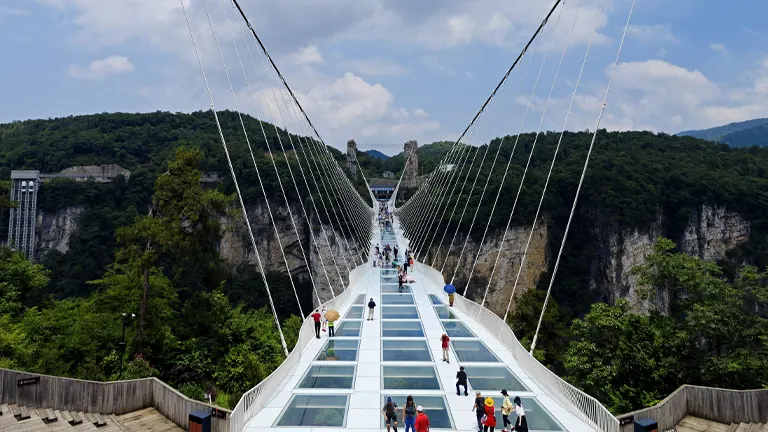
The Zhangjiajie Grand Canyon Glass Bridge, the world’s longest (430 meters) and highest (300 meters) pedestrian glass bridge, opened in August 2016. Spanning the canyon, this architectural marvel provides visitors with a thrilling experience as they walk across transparent glass panels, revealing the canyon floor beneath their feet. Offering unparalleled views of the rugged terrain, lush greenery, and flowing streams, the glass bridge is both a daring adventure and an opportunity to appreciate the natural beauty of Zhangjiajie.
4. Tianzi Mountain
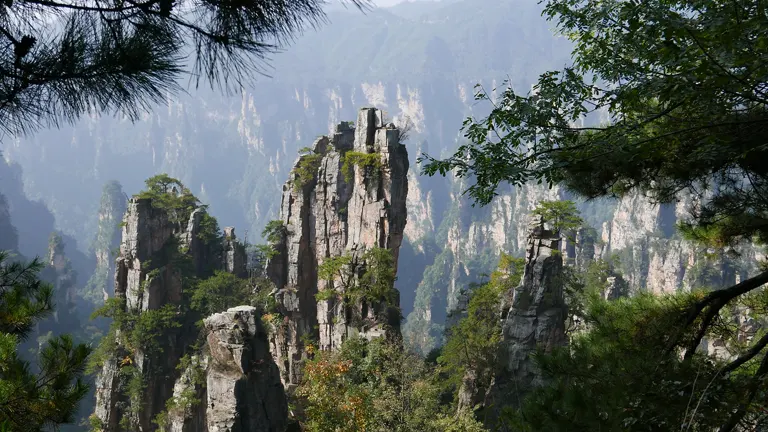
Tianzi Mountain, or “Son of Heaven Mountain,” is a towering peak within the Wulingyuan Scenic Area. Rising majestically to an elevation of 1,262 meters, it offers panoramic vistas of the surreal landscapes below. Named after Xiang Dakun, a Tujia ethnic minority leader who led a successful local uprising against the imperial forces, Tianzi Mountain showcases an intricate maze of quartz-sandstone pillars, verdant valleys, and mist-shrouded peaks, creating a landscape reminiscent of traditional Chinese paintings.
5. Yellow Stone Village (Huangshi Zhai)

Huangshi Zhai, or Yellow Stone Village, presents a breathtaking landscape characterized by precarious cliffs, unique rock formations, and dense forests. Accessible by cable car, this elevated vantage point allows visitors to witness the sunrise or sunset, casting an ethereal glow on the towering sandstone pillars. The 360-degree panoramic views from Yellow Stone Village provide an immersive experience into the captivating scenery that defines Zhangjiajie National Forest Park.
6. Golden Whip Trail
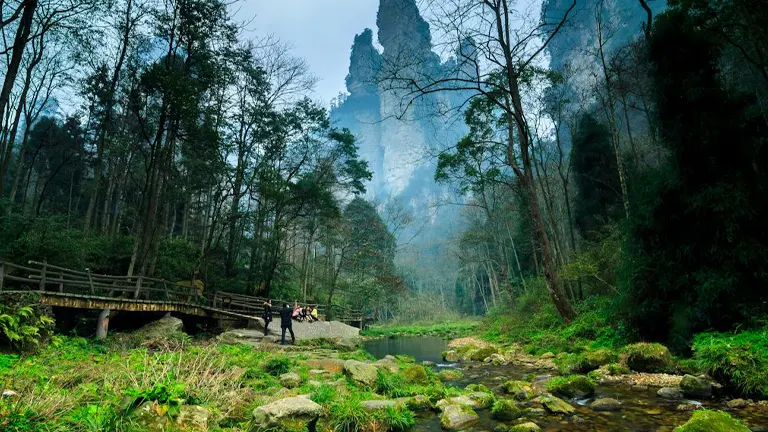
The Golden Whip Trail, a 3.9-mile trek, winds through the heart of the park, offering a moderate-level hiking experience. The trail leads hikers to the famed Avatar Hallelujah Mountain, showcasing diverse landscapes, wildflowers, and enchanting views. As visitors traverse the trail, the immersive natural beauty, coupled with the park’s unique geological features, makes the Golden Whip Trail a favorite among those seeking a closer connection to Zhangjiajie’s pristine environment.
These attractions collectively define the enchanting allure of Zhangjiajie National Forest Park, inviting visitors into a realm of natural wonders and cultural significance. Whether gazing upon the iconic quartz-sandstone pillars or daring to cross the glass bridge, each experience unfolds as a testament to the park’s status as a UNESCO World Heritage Site and a haven for those seeking the extraordinary in nature.
Recreational Activities in the Zhangjiajie National Forest Park
1. Hiking and Nature Trails
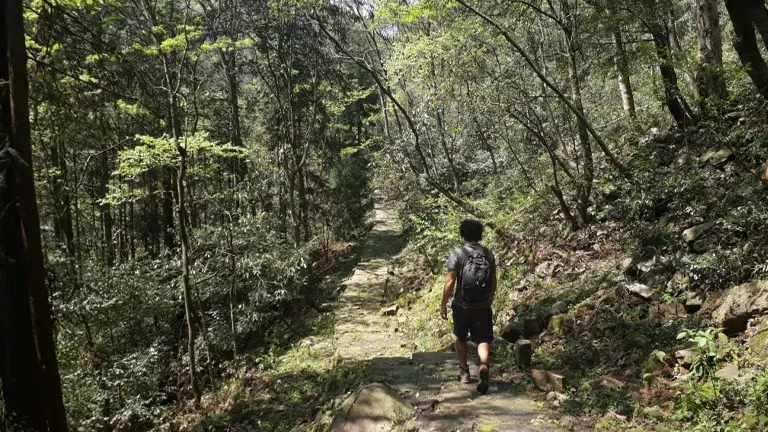
Zhangjiajie National Forest Park offers a network of well-maintained hiking trails, allowing visitors to explore the park’s diverse landscapes on foot. From the challenging Zhangjiajie Scenic Area Trail, covering 8.8 miles with an elevation change of 3,812 feet, to the more moderate options like the Golden Whip Trail, hikers can immerse themselves in the breathtaking scenery, witness unique rock formations, and experience the lush vegetation that defines the park.
2. Bailong Elevator Ascent

For those seeking a thrilling ascent, the Bailong Elevator, or “Hundred Dragons Sky Lift,” provides an exhilarating ride up the sheer sandstone peaks. Soaring to a height of 326 meters, this outdoor lift offers panoramic views of the surrounding forested terrain. The rapid ascent takes less than two minutes, providing a convenient and awe-inspiring way to reach elevated viewpoints within the park.
3. Zhangjiajie Grand Canyon Glass Bridge Experience

Adventure enthusiasts can test their courage on the Zhangjiajie Grand Canyon Glass Bridge, the world’s longest and highest pedestrian glass bridge. Stretching 430 meters across the canyon at a height of 300 meters, this transparent walkway offers a heart-pounding experience as visitors traverse the bridge, surrounded by the stunning canyon landscape. It’s an opportunity to blend adrenaline with the appreciation of the park’s natural beauty.
4. Photography and Sightseeing

Zhangjiajie National Forest Park is a paradise for photographers and sightseers alike. From the iconic Avatar Hallelujah Mountain to the towering quartz-sandstone pillars and mist-shrouded valleys, every corner of the park offers a picturesque scene waiting to be captured. The unique geological formations, combined with lush greenery, create a visual feast for those with a passion for photography and a love for the sublime in nature.
5. Birdwatching Along Trails

The park’s rich biodiversity extends to its avian inhabitants, making it an ideal destination for birdwatching enthusiasts. As visitors explore the various trails, especially the Golden Whip Trail, they may encounter vibrant species like the Fairy Pitta and Crested Kingfisher. The diverse habitats provide ample opportunities to spot and appreciate the park’s feathered residents in their natural surroundings.
6. Cable Car Rides to Huangshi Zhai (Yellow Stone Village)

Accessible by cable car, the ascent to Huangshi Zhai, or Yellow Stone Village, presents an opportunity to appreciate the park’s grandeur from a lofty vantage point. The cable car ride itself offers stunning aerial views of the unique rock formations and dense forests. Once at the top, visitors can explore the elevated trails, witness breathtaking sunsets or sunrises, and marvel at the intricate landscapes that unfold below.
Incorporating a range of activities, Zhangjiajie National Forest Park provides a multifaceted recreational experience, catering to adventurers, nature enthusiasts, cultural explorers, and those seeking tranquility amidst breathtaking landscapes.
Facilities and Amenities in Zhangjiajie National Forest Park
- Visitor Centers and Information Desks: Zhangjiajie National Forest Park is equipped with visitor centers strategically placed throughout the park. These centers serve as information hubs, providing visitors with maps, brochures, and knowledgeable staff to assist in planning their exploration. From trail information to updates on weather conditions, these centers enhance the overall visitor experience by ensuring everyone has the resources needed for a safe and enjoyable journey.
- Accommodation Options: To accommodate the diverse needs of visitors, Zhangjiajie National Forest Park offers various lodging options within and around the park. From comfortable hotels to quaint guesthouses nestled in the scenic surroundings, visitors can choose accommodations that suit their preferences. Staying within the park allows for early access to sunrise viewpoints and a more immersive experience in nature.
- Restaurants and Cafes: Several restaurants and cafes are scattered throughout Zhangjiajie National Forest Park, providing a welcome respite for weary explorers. These establishments offer a mix of local and international cuisine, allowing visitors to savor delicious meals while enjoying panoramic views of the surrounding landscapes. It’s a chance to recharge and appreciate the culinary diversity that complements the park’s natural beauty.
- Transportation Services: Navigating the vast expanse of the park is made convenient with transportation services such as shuttles and cable cars. Shuttles transport visitors between key attractions, ensuring easy access to various points of interest. Additionally, cable cars, like the one leading to Huangshi Zhai (Yellow Stone Village), provide not only efficient transportation but also breathtaking aerial views of the park’s unique topography.
- Souvenir Shops: Scattered throughout the park are souvenir shops offering an array of mementos for visitors to take home. From traditional handicrafts to locally inspired artwork, these shops provide an opportunity to support local artisans and commemorate the visit to Zhangjiajie National Forest Park with a meaningful keepsake.
- Medical and First Aid Facilities: Safety is a priority, and Zhangjiajie National Forest Park is equipped with medical and first aid facilities to address any unforeseen health concerns. Trained staff and medical professionals are available to provide assistance, ensuring that visitors can explore the park with the confidence that their well-being is a priority.
- Cultural Performances and Interpretative Centers: To enrich the cultural experience, Zhangjiajie National Forest Park features interpretative centers and cultural performances. These venues offer insights into the rich history, traditions, and folklore associated with the park and its surrounding regions. Cultural performances showcase traditional music, dance, and rituals, providing visitors with a deeper understanding of the cultural tapestry woven into the park’s landscapes.
- Sanitary Facilities and Rest Areas: Maintaining cleanliness and hygiene, the park is equipped with sanitary facilities and well-maintained rest areas. These areas provide a comfortable place for visitors to take a break, refresh, and prepare for the next leg of their exploration. Clean and accessible restrooms contribute to the overall convenience and enjoyment of the park visit.
In creating a seamless and enjoyable experience, Zhangjiajie National Forest Park’s facilities and amenities cater to the diverse needs of visitors, ensuring comfort, safety, and the opportunity to immerse oneself in the wonders of this UNESCO World Heritage Site.
Tips for Visiting Zhangjiajie National Forest Park
- Plan Ahead and Check Weather Conditions: Before embarking on your journey to Zhangjiajie National Forest Park, it’s essential to plan ahead. Check the weather conditions, especially if you plan to hike or explore outdoor attractions. The park experiences varying temperatures throughout the year, so packing accordingly will ensure a comfortable and enjoyable visit.
- Arrive Early to Beat the Crowds: To fully appreciate the tranquility and beauty of Zhangjiajie, consider arriving early in the morning. This not only allows you to experience popular attractions with fewer crowds but also provides an opportunity to witness stunning sunrise views from elevated viewpoints.
- Wear Comfortable and Sturdy Footwear: The park’s terrain can be rugged and challenging, especially if you plan on hiking or exploring trails. Ensure you wear comfortable, sturdy footwear to navigate uneven paths and rocky terrain comfortably. This is particularly important for those embarking on longer hikes or reaching elevated viewpoints.
- Stay Hydrated and Bring Snacks: Exploring the expansive landscapes of Zhangjiajie can be physically demanding. It’s crucial to stay hydrated, especially during warmer seasons. Carry a reusable water bottle and some light snacks to keep your energy levels up, ensuring you have the stamina to fully enjoy the park’s offerings.
- Respect Local Customs and Regulations: Zhangjiajie National Forest Park is not only a natural wonder but also a cultural treasure. Respect local customs, follow park regulations, and adhere to designated trails. Responsible and considerate behavior contributes to the preservation of the park’s pristine environment and enhances the overall experience for both visitors and future generations.
- Capture the Beauty but Be Mindful: Zhangjiajie’s landscapes are undoubtedly photogenic, and capturing the beauty on camera is a natural instinct. However, be mindful of your surroundings and other visitors. Avoid disrupting the natural flow of foot traffic or disturbing wildlife while seeking that perfect shot. Responsible photography ensures everyone can appreciate the park’s wonders.
- Utilize Park Shuttles and Cable Cars: The park offers convenient transportation options such as shuttles and cable cars to navigate between attractions efficiently. Utilize these services to save time and energy, especially if you plan to explore multiple areas within the park. Cable cars also provide breathtaking aerial views of the landscapes.
- Learn About Local Flora and Fauna: Enhance your experience by learning about the local flora and fauna. The park’s unique ecosystems host a variety of plant and animal species. Consider taking guided tours or attending interpretative sessions to deepen your understanding of the natural wonders that make Zhangjiajie National Forest Park a UNESCO World Heritage Site.
- Pack Essentials Including Sunscreen and Bug Repellent: Ensure you pack essential items, including sunscreen and bug repellent. The park’s dense vegetation and outdoor activities expose visitors to sunlight and potential insect encounters. Protect yourself from sunburn and insect bites to fully enjoy your time in the park.
- Immerse Yourself in Local Culture: Beyond the natural beauty, Zhangjiajie is rich in cultural heritage. Take the time to immerse yourself in local culture by attending traditional performances, visiting interpretative centers, and engaging with the cultural elements woven into the park’s landscapes. This adds a meaningful and holistic dimension to your visit.
By following these tips, you can make the most of your visit to Zhangjiajie National Forest Park, ensuring a memorable and respectful experience in this extraordinary natural wonder.
Recommendation
I strongly recommend exploring Zhangjiajie National Forest Park for a captivating union of natural marvels and cultural significance. This park, renowned for its varied ecosystems, iconic landmarks, and recreational activities, offers a unique and immersive encounter. Immerse yourself in reflective outdoor activities such as hiking and observing wildlife, actively contributing to ongoing conservation efforts. The scenic trails, historic points of interest, and collaborative conservation endeavors establish Zhangjiajie National Forest Park as a vital destination for those seeking a harmonious integration of nature and recreational exploration.
Conclusion
In conclusion, Zhangjiajie National Forest Park stands as a testament to the sublime beauty and rich cultural heritage found within the heart of China. With its towering quartz-sandstone pillars, lush forests, and diverse ecosystems, the park offers a breathtaking canvas that seamlessly blends natural wonders and human history. From the iconic Avatar Hallelujah Mountain to the engineering marvel of the Bailong Elevator and the world’s longest glass bridge, each feature contributes to the park’s allure. Beyond its picturesque landscapes, Zhangjiajie beckons visitors with opportunities for hiking, wildlife observation, and a glimpse into the vibrant local culture. As a UNESCO World Heritage Site and a beacon of conservation efforts, the park not only preserves its extraordinary landscapes but also invites all who venture here to connect with the awe-inspiring beauty of the Chinese landscape. Zhangjiajie National Forest Park stands not just as a destination but as a profound experience, weaving together nature, history, and the spirit of exploration in an unforgettable tapestry.
FAQs
- What is the significance of the Avatar Hallelujah Mountain in Zhangjiajie National Forest Park?
The Avatar Hallelujah Mountain, formerly the Southern Sky Column, gained fame as the inspiration for floating mountains in the movie “Avatar.” Standing at 1,080 meters, it showcases the unique quartz-sandstone formations that make Zhangjiajie a natural wonder, providing a cinematic experience and breathtaking views. - How did Zhangjiajie National Forest Park get its UNESCO World Heritage status?
Zhangjiajie National Forest Park became part of the larger Wulingyuan Scenic Area, which was designated a UNESCO World Heritage Site in 1992. The park’s distinct quartz-sandstone pillars and lush landscapes played a crucial role in earning this recognition for their exceptional natural beauty and geological importance. - What recreational activities are available for visitors in Zhangjiajie National Forest Park?
Visitors can engage in a variety of activities, including hiking along picturesque trails, exploring the Bailong Elevator and Zhangjiajie Grand Canyon Glass Bridge, and participating in cultural experiences at Tianzi Mountain. These activities provide a unique blend of adventure, nature appreciation, and cultural immersion. - How does the park contribute to conservation efforts?
Zhangjiajie National Forest Park actively engages in conservation initiatives by promoting responsible tourism practices, preserving its unique ecosystems, and conducting educational programs. The park emphasizes sustainable development to ensure the long-term protection of its natural and cultural heritage. - Are there guided tours available in Zhangjiajie National Forest Park?
Yes, the park offers guided tours conducted by knowledgeable local guides. These tours provide insights into the geological features, flora, fauna, and cultural aspects of Zhangjiajie. Visitors can choose from a range of guided options to enhance their understanding of the park’s rich diversity. - What is the best time to visit Zhangjiajie National Forest Park?
The best time to visit is during the spring and autumn months when the weather is mild, and the landscapes are adorned with blossoming flowers or vibrant autumn foliage. These seasons offer comfortable temperatures for outdoor activities and clearer views of the iconic pillars. - How do visitors access Zhangjiajie National Forest Park from the city center?
Visitors can access the park from Zhangjiajie city center by various means, including buses and taxis. The city is well-connected, and transportation services are available to take tourists to different entrances of the park. Additionally, cable cars and elevators within the park provide efficient transport to elevated viewpoints. - What cultural experiences can visitors expect at Tianzi Mountain in Zhangjiajie National Forest Park?
Tianzi Mountain offers cultural experiences such as exploring Tujia ethnic minority customs and traditional performances. Visitors can delve into the rich history of the region, adding a cultural dimension to their journey and understanding the human connection to the breathtaking landscapes of Zhangjiajie.
Zhangjiajie National Forest Park is a true marvel of nature, and it’s no surprise that it has captured the hearts of many visitors over the years. From the awe-inspiring views of the Avatar Hallelujah Mountain to the tranquil beauty of the Golden Whip Stream, every step you take in this park is a journey of discovery and wonder. Whether you’re a seasoned traveler or a first-time visitor, Zhangjiajie National Forest Park is a must-visit destination that promises to leave you with unforgettable memories for a lifetime.


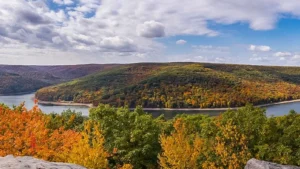


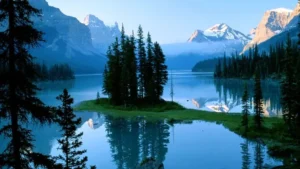
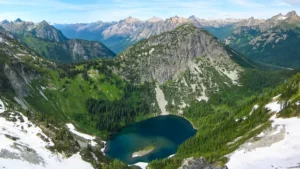
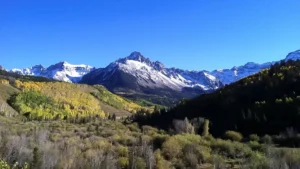
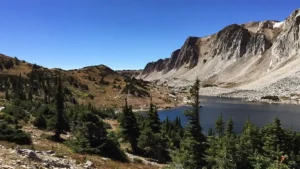

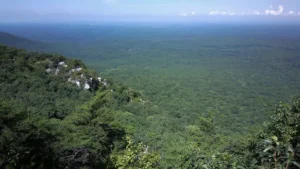
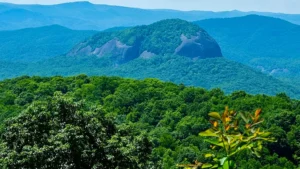
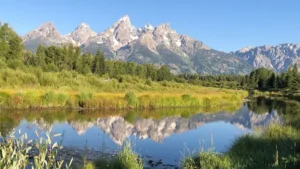
Leave your comment